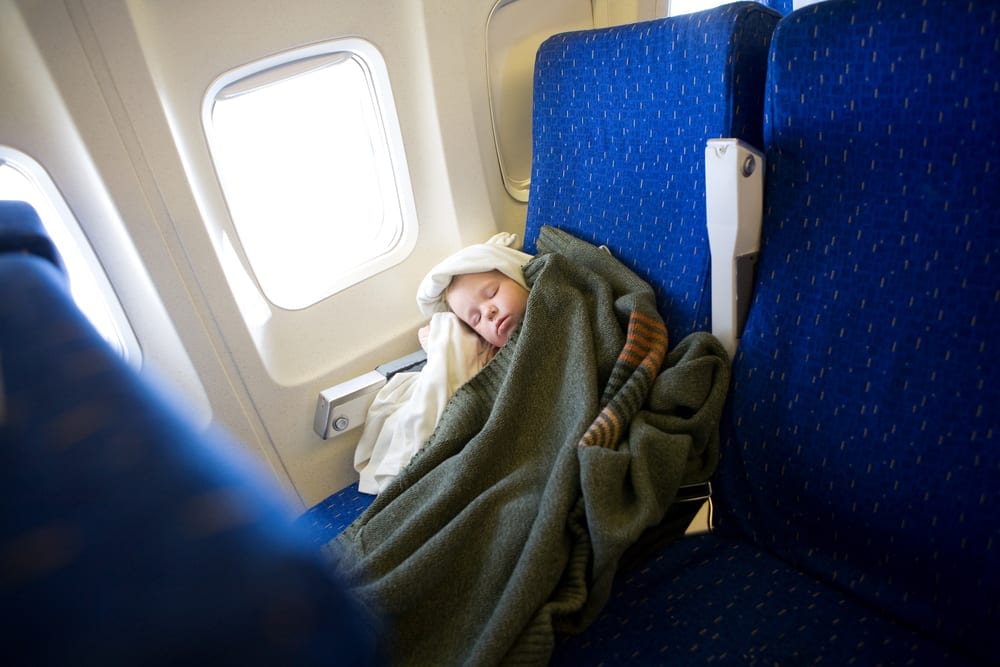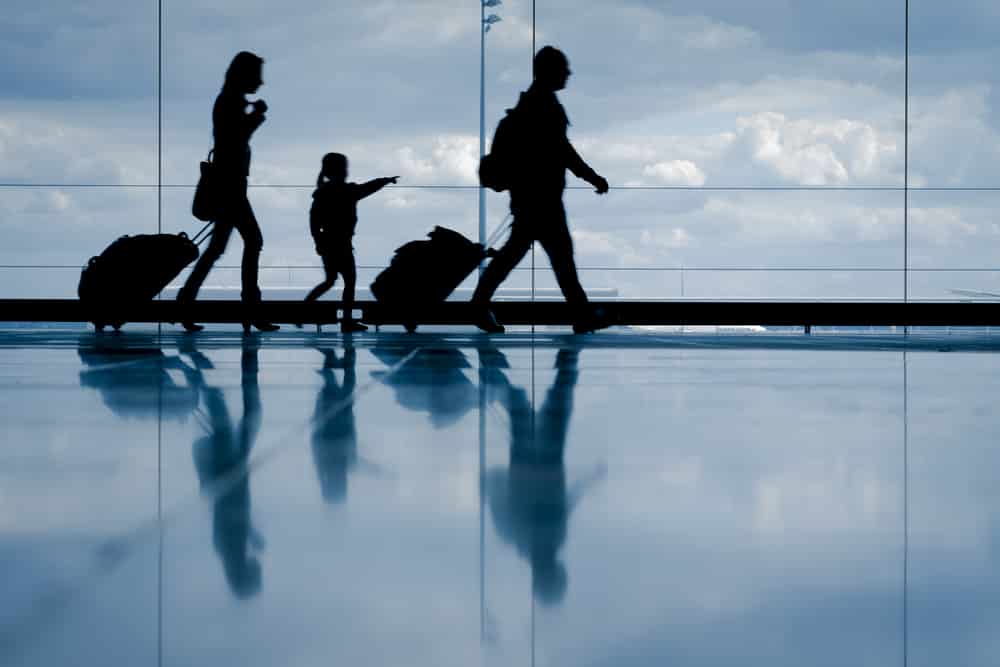Traveling with kids builds family cohesion and lifetime memories. Travel enhances education, teaches children how to cope with change and transition, and makes for a more worldly and culturally aware child. It can be joyful and fun. It can also be extremely stressful especially if airline travel is part of the itinerary.
Airline travel is not as easy as it once was. Increased security measures, an airline industry struggling to maintain a profit margin, and an increasingly customer-hostile airline industry has made airline travel a survival of the fittest experience at times. Even for the seasoned traveler, airline travel can still be stressful. But if you’re traveling with children, airline travel can be a downright nightmare for you and your fellow passengers.
If you plan to use airline travel during your trip, the best defense against unpleasant experiences is research and preparation. Do your homework. Predict what could go wrong and prepare for the what-if’s. Know airline rules, the potential security headaches, prepare for a long flight and wait times, and rehearse potential experiences with your children.
Potential Price Hikes
According to Chris Elliot, travel and consumer advocate, airlines may be raising ticket prices for children and infants. Fueled by ways to increase revenue, an increase in security measures, and an increasingly unhappy-to-serve-you mentality among airline agents, airlines may begin charging full fare for young children. Currently in the United States, lap kids younger than two travel for free on domestic flights. However, travel to many international destinations such as Latin America, U.S. carriers charge 10 percent of an adult fee plus international taxes even for lap babies, and may require you to ticket your lap baby. But airlines like Brazilian Airlines are considering a “baby tax” on top of the 10 percent charge. Only time will tell if that happens and what other airlines follow suit.
If you try to reserve a seat for your children next to you, be aware that airlines are not required to confirm childrens’ seats next to their parents. If it’s important to you that your child sit next to you, consider buying a ticket for your child. Just in case, prepare your child that he might have to sit by himself a few rows away.
Special Needs
If you’re traveling with a special needs child or one with disabilities, plan well in advance. Airlines do make reasonable accommodations but may require you to check in at the gate more than an hour before flight time. If you have a child with special needs, air travel, especially waiting, flight delays, transitions, and take-off and landing can be difficult. Let the airline know well in advance, talk with your pediatrician or specialist about measures you can take to make the airline travel less stressful on your child. If your child needs oxygen, a stretcher, or electrical power for any medical devices, the airline may charge additional fees.
One service, SpecialGlobe is designed to assist families and caretakers of special-needs passengers in researching, planning and booking travel. Parents can book trips, hotels, find recommendations, and share experiences with other special needs parents. The site also includes services a special needs family might need such as a nearby hospitals, pharmacies, restaurants with accommodations, and activities that everyone in the family can be a part of.
Documentation
If you’re traveling domestically, you don’t need a passport. But you will need some identifying papers proving that your child is yours. A birth certificate isn’t always convenient but a passport card is. Available for purchase with a passport, the U.S. Department of State issues these wallet-size cards that have the same information as a standard passport and are accepted as valid I.D. by the TSA and airlines.
Also, if you’re traveling without your spouse, if you’re divorced, or separated, TSA and airline agents may ask for a notarized letter showing that you have permission to travel with your child. This is enforced more regularly on international flights.
Carry-on Bags
Since 9/11, there are strict regulations governing carry-on bags. According to USA Travel Tips, the airlines have strict rules on the size, weight, and number of carry one bags one can take on a plane. Each passenger is allowed one carry-on and one personal bag. The international size limit for a carry-on is 45 linear inches (length plus the width plus the height of the bag). A personal item must be less than 36 linear inches. A carry-on must not exceed 40 pounds.
Within those carry-ons, which are scanned by the TSA, you are limited to liquids (shampoos, mouthwash, cough syrup, etc.) that fit in 3.4 ounce plastic containers and fit cumulatively in a single quart-size zip-lock bag. Any sharp, flammable, explosive, or hazardous items aren’t permitted in your carry-on. That includes sporting equipment, tools, tweezers, or any item that could conceivably be used as a weapon on the flight.
If you travel with young children, the regulations do loosen slightly. Breast milk, pre-measured baby formula, and some medicines are permitted in amounts that exceed 3.4 ounces. Also, coats, hats, diaper bags, child safety seats, and medical equipment are excluded from the carry-on restriction. If you need room temperature water for formula, you can buy it once you’re through security. The airplane does not have potable water except through the drink cart and the flight attendants may not be able to warm your bottles. Just be prepared.
Pre-order Meals
Airline fare leaves much to be desired. If you’ve small children, pack plenty of snacks. Domestic airlines are notoriously skimpy on food quality and quantity; meals and other concessions aren’t made available for lap-kids.
However, there are some stellar airlines that deliberately cater to children and families. If you’re flying with kids and have a choice, check out the airlines listed below. If not and you’re relying on meal service, pre-order meals for the kids well before the flight date.
These airlines do a great job with kids and families:
- Virgin Atlantic
- Lufthansa
- Emirates
- Alaska Airlines
- British Airways
- Cathay Pacific
- Singapore
- Air New Zealand
- Jet Blue
Snacks
Pack nourishing snacks for your kids and focus on hydration. Dehydrating can breed unhappy, uncomfortable, ornery children. Prepackage the snacks in small, Ziploc bags. Dried cereal, dried fruit, grapes, apple wedges, granola bars, pretzels, and chunks of cheese or turkey are good, finger-size choices. Bring a couple plastic spoons, straws, extra sippy cups, and gum. Gum, or suckers, are beneficial for the take-off and landing when changing air pressure can hurt your kids ears.
Toys, Activities, and Comfort Items
Do bring blankies, pacifiers, and favorite portable stuffed animals. Flight time isn’t the time to regulate blankie. If it keeps your children calm and quiet, use it (drugging your children isn’t included). Bring special activities, manipulative books, or games your child hasn’t seen or used in a long time.

Portable DVD players with head sets, electronic games with headsets, and electronic readers are great for older kids once the flight takes off and the flight attendants give the “all clear” on electronic devices. Mad Libs, comic books, puzzles, and word search magazines are also terrific activities.
Practice
Passing through security can be one of the most stressful aspects of the airline travel. While some domestic airports don’t require children 12 and under to remove their shoes, TSA will require parents to remove infants from carriers and strollers. Read regulations on the TSA website and do practice run-throughs with your children. Tell them what to expect. Prepared children are more adaptive and compliant (generally speaking). Also do practice run-throughs for flight travel. Let the kids know what to do expect, what the rules of the plane are, and what they are and aren’t permitted to do on the flight.
Train your older children to seek out family/children-friendly lines in security areas. Those special lines for families are geared toward parents with children and can prevent melt-downs in tired, travel-weary children.
Most importantly, make it clear that seat belts are required on the flight, screaming and running are not.
Airline travel can be an exciting experience for children. It stimulates storytelling, memories, and family lore. By preparing yourself, doing homework, and preparing your children, airline travel for kids can be reasonably pleasurable instead of a nightmare.
